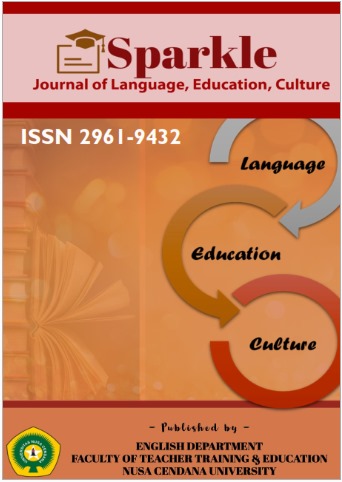Teaching Vocabulary to Young Learners of Naska Strett Neighbourhood by Using Flashcard (A Case Study)
Abstract
This study was carried out under the title Teaching Vocabulary to Young Learners of Nangka Street Neighborhood by Using Flashcard: (A Case Study). This case study was implemented to elementary school students aged 8 to 10 who lived at Nangka Street RT 19 / 20 RW 006. The aims of this study were (1) to know to what extent the use of flashcards help to develop students’ vocabulary competence, (2) to find out the advantages and disadvantages of teaching using flashcards. This study used a descriptive qualitative method. It involved 10 elementary school students who comes from different schools, including SDK Don Bosco 2 and 3, SDK ST Yoseph 3, SD Inpres Oeba 2 and SDN Oebobo 1 and 2. The instrument used to collect the data was a writing test. The result shows that by using flashcard, children can easily memorize something, and therefore they become more interested in teaching and learning process. Moreover, by using flashcard, teacher can help the children to remember the word in the picture, to add new vocabulary, and to increase vocabulary master. To conclude, learning by playing with flashcards can help improve young learners' vocabulary.

 Renata Samosir(1)
Renata Samosir(1)

